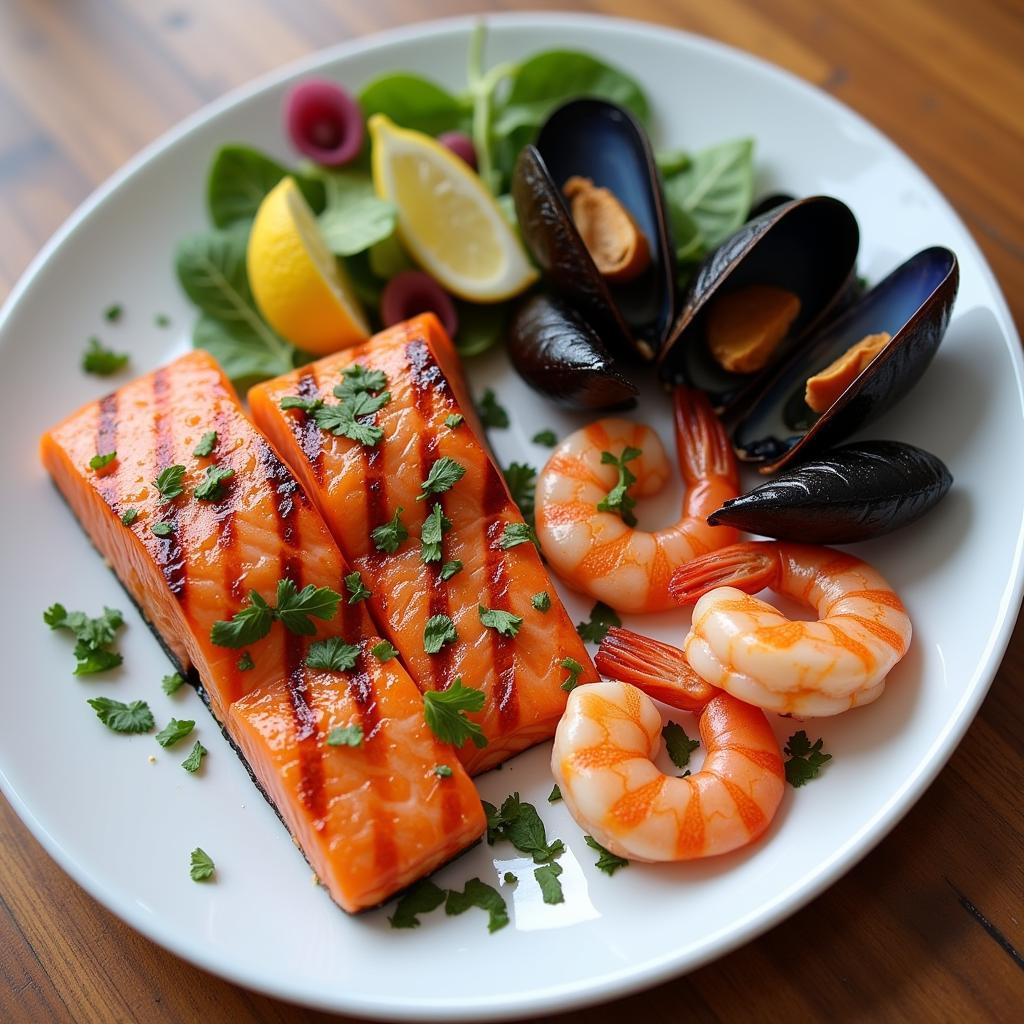Fluoride is a mineral that occurs naturally in water and soil. It’s added to many public water supplies to help prevent tooth decay, and it’s also found in some foods and drinks.
While fluoride is beneficial for our teeth, consuming too much can lead to health problems such as fluorosis. So, understanding which foods are high in fluoride can help you make informed decisions about your diet and oral health.
Unveiling the Fluoride Content of Your Food
You might be surprised to learn that fluoride isn’t just found in your toothpaste. Many foods naturally contain this mineral. Here’s a breakdown of some common food sources:
1. Seafood
Seafood, especially those from saltwater environments, tends to be higher in fluoride. This includes:
- Fish: Canned salmon, cod, and mackerel
- Shellfish: Shrimp, crab, and lobster
It’s worth noting that the fluoride content in seafood can vary depending on the species and where it’s sourced.
 Seafood High in Fluoride
Seafood High in Fluoride
2. Tea
Tea, particularly black tea, is known for its fluoride content. This is because tea plants absorb fluoride from the soil. As tea leaves steep, fluoride is released into the beverage.
3. Grapes and Raisins
Grapes and raisins contain naturally occurring fluoride. This is due to the ability of grapevines to absorb fluoride from the soil and water.
4. Processed Foods and Beverages
Many processed foods and beverages contain fluoride as an additive. This is because fluoride is often added to processed foods during manufacturing, particularly those made with fluoridated water.
Some examples of processed foods that may contain added fluoride include:
- Canned fruits and vegetables
- Soft drinks and juices
- Cereals
5. Chicken
Chicken, particularly mechanically deboned chicken (MDC), can be high in fluoride. This is because fluoride can accumulate in the bones of animals.
Understanding the Importance of Fluoride
Fluoride plays a crucial role in maintaining strong teeth and preventing cavities. It strengthens tooth enamel, making it more resistant to acid attacks from bacteria in plaque.
However, excessive fluoride intake, especially during childhood when teeth are developing, can lead to dental fluorosis. This condition causes white streaks or spots to appear on the teeth. In severe cases, it can even cause pitting and brown discoloration.
Striking a Balance: Tips for Managing Fluoride Intake
Maintaining a healthy fluoride intake is all about balance. Here are some tips to help you manage your fluoride consumption:
- Drink tap water in moderation: If your community water supply is fluoridated, drinking tap water can be a good source of fluoride. However, excessive consumption can lead to overexposure.
- Choose low-fluoride toothpaste for children: Young children are particularly susceptible to dental fluorosis. Using low-fluoride toothpaste specifically designed for children can help minimize the risk.
- Read food labels carefully: Pay attention to the ingredient list of processed foods and beverages. Look for products that contain added fluoride and choose alternatives when possible.
- Consult your dentist: If you have any concerns about your fluoride intake or the risk of dental fluorosis, don’t hesitate to consult your dentist. They can provide personalized advice based on your individual needs and risk factors.
Conclusion
Understanding which foods are high in fluoride empowers you to make informed choices about your diet and oral health. While fluoride is essential for strong teeth, moderation is key. By being mindful of your fluoride intake and following the tips outlined above, you can enjoy the benefits of this mineral while minimizing the risks.
FAQs
1. Can I get enough fluoride from food alone?
It’s possible to get some fluoride from food, but it’s difficult to rely solely on diet for adequate intake. Public water fluoridation remains the most effective way to ensure optimal fluoride levels for dental health.
2. How can I tell if I’m getting too much fluoride?
Early signs of excessive fluoride intake include white streaks or spots on the teeth, known as dental fluorosis. In severe cases, teeth may become pitted or discolored. If you notice any of these symptoms, consult your dentist.
3. Should I avoid giving my child foods high in fluoride?
It’s generally recommended to use low-fluoride toothpaste for young children and to monitor their intake of processed foods and beverages that may contain added fluoride. Consult your child’s dentist for personalized advice.
4. Does cooking food reduce its fluoride content?
Cooking methods like boiling can reduce the fluoride content of food to some extent. However, other methods like steaming or microwaving may not have a significant impact.
5. Are there any health risks associated with fluoride deficiency?
Fluoride deficiency can increase the risk of tooth decay. It’s essential to ensure adequate fluoride intake for optimal oral health.
Need more information on how your diet can impact your overall well-being? Check out our article on foods that cause false positive breathalyzer.
For personalized advice on maintaining optimal oral health, contact our team at Mina Cones Food. Call us at 02437655121, email us at minacones@gmail.com, or visit us at 3PGH+8R9, ĐT70A, thôn Trung, Bắc Từ Liêm, Hà Nội, Việt Nam. We’re here to support you 24/7.